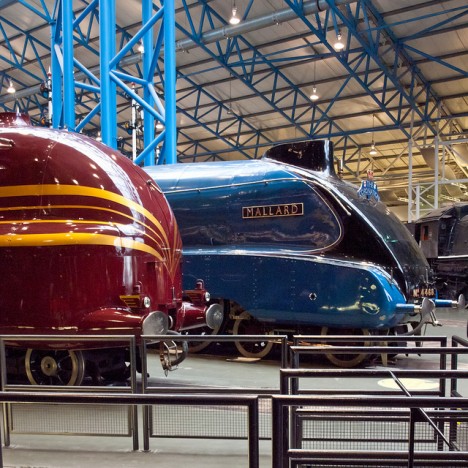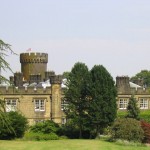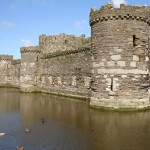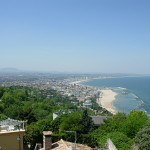On Track To York – A Day Out In The Railway City | United Kingdom
Arriving at York Railway Station, you get your first insight into the history surrounding the railways in this beautiful city. Today’s station was built in 1877, and at that time was the largest station in the world. It was preceded by York old railway station, which was situated on the opposite side of the road, behind the magnificent Bar Walls.

National Railway Museum in York / Photo licensed under the Creative Commons, created by Martin Robson
On leaving the Station, you will come across the fantastic, Victorian built Royal York Hotel. The hotel was opened in 1878, originally named The Royal Station Hotel. Today, you can enter the hotel’s pretty gardens and ascend 60 metres above the city on The Wheel of York, taking in the awe inspiring views across the city, and getting a unique view of the station and its surroundings.
Continuing on towards the city centre, you will come across a statue of George Leeman, who was the Chairman of the Railway Association of Great Britain and Deputy of North Eastern Railways. The statue was unveiled in 1885 and Station Road became Leeman Road, two years after his death.
Taking a left down Leeman Road, you will come to the world famous National Railway Museum, which opened in 1975 on the former site of the York North locomotive depot. The museum houses the national collection of historic railway vehicles, and includes some fantastic examples of Royal Trains, the Flying Scotsman, Mallard, and many steam locomotives.
In June 2012, the museum is holding ‘Railfest’, a celebration of Britain’s railways, where you can take a rare look inside the driver’s cabs, and ride on various trains. Rarely seen railway giants such as snow ploughs and a sail powered railway vehicle will also be on show.
A road train runs from the museum the short distance to the city centre; on this journey you will pass under the Bar Walls, through an impressive archway. Opposite you will see a grand Georgian building, aptly named The Cedar Court Grand Hotel, York’s first five star hotel. It was originally built in 1906 by the North Eastern Railway Company and housed their headquarters. The street to the right of the building is the site of the old railway station.
Continuing past the old Headquarters, the first street on your right is Rougier Street, which leads onto George Hudson Street. Hudson, known as ‘The Railway King’, is famed with bringing the railways to York. He became Lord Mayor of the city in 1837, the same year he had a chance meeting with George Stephenson, ‘The Father of Railways’, who had built the world’s first steam locomotive railway line. The pair worked together on the building of the railways and were also friends. By 1844, Hudson was in control of over a thousand miles of railway, but despite his success, after being discovered of committing fraud, he died penniless in 1871.

York Minster / Photo licensed under the Creative Commons, created by andy
Continuing on the road train, you will pass over Lendal Bridge, look to your left and you will see Scarborough Bridge a short distance down river. This train bridge takes trains from York Station to the seaside destination of Scarborough on a single track. The road train will take you to Duncombe Place, from where you can be inspired by the magnificent York Minster, and take time to wander through the streets of the historic city itself.
Returning to the Railway Station, it is impossible to leave the city without a feeling of wonderment, having taken in the history of the rail revolution, the very thing that makes York what it is today.
Author: Julie Ward writes on behalf of the Love My Vouchers Lifestyle blog, the UK’s discount and voucher code blog that helps you visit the UK on a budget.
View On Track To York – A Day Out In The Railway City United Kingdom in a larger map














